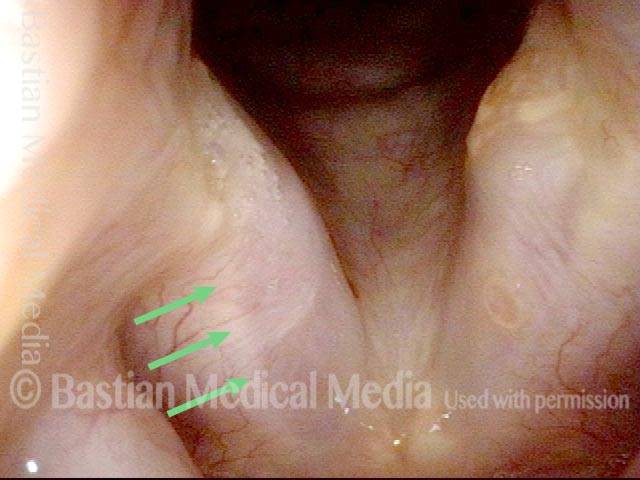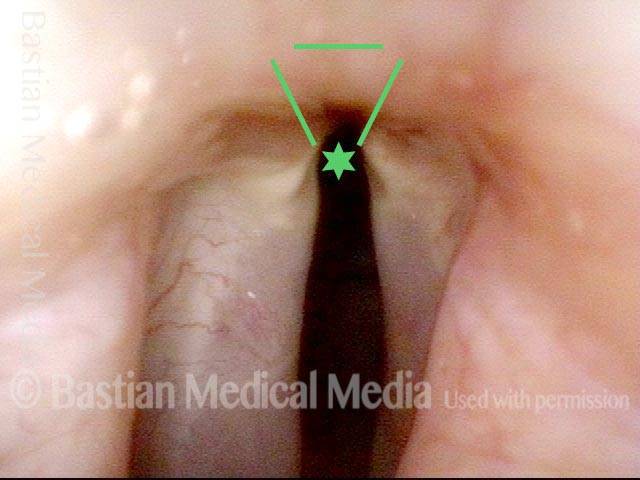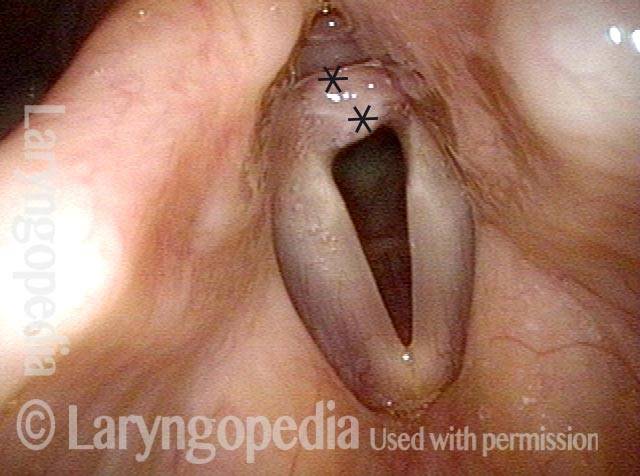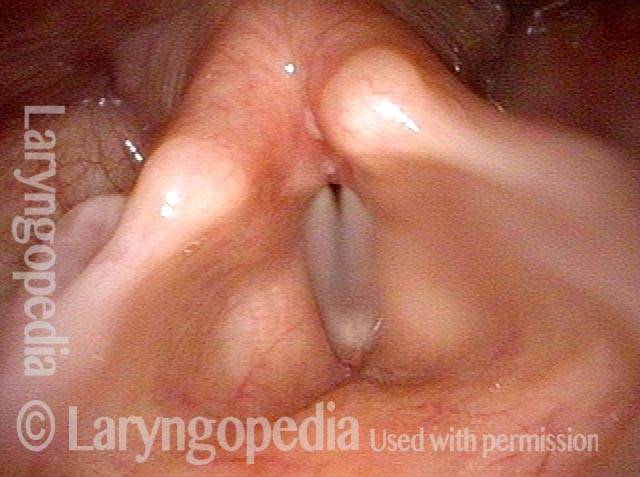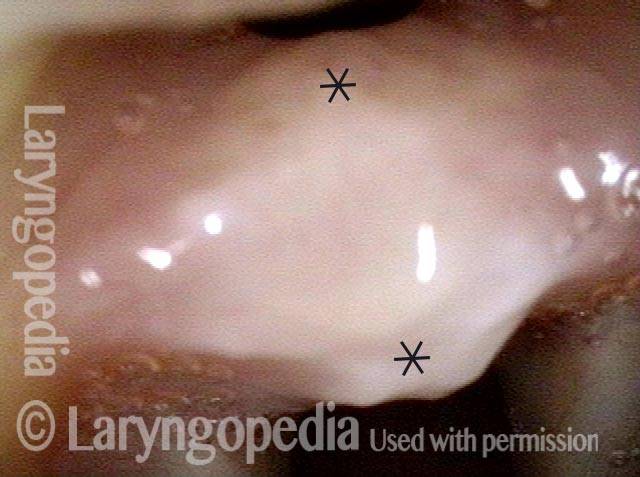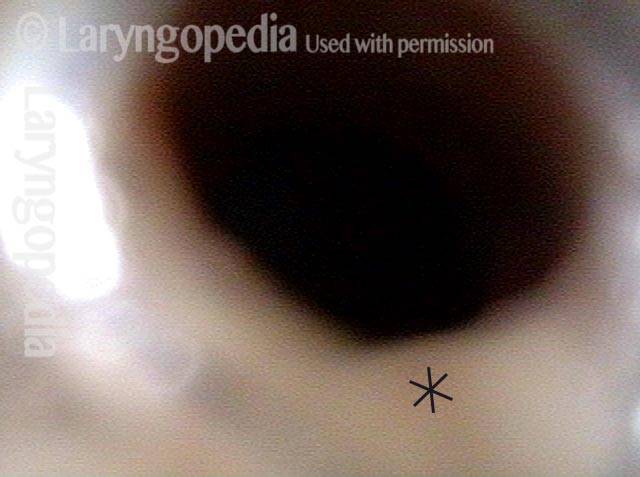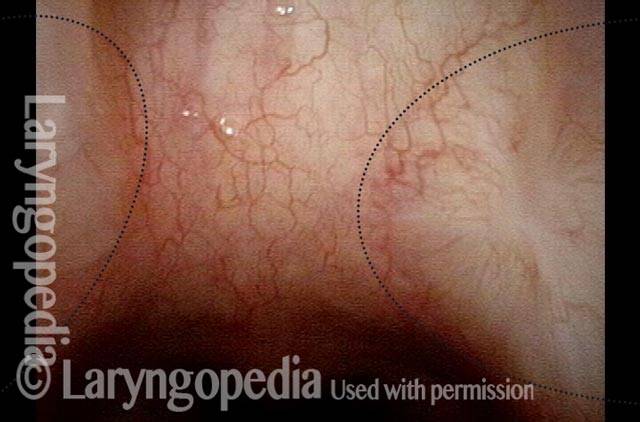
Posterior commissure is the flat, front-facing surface of the glottic aperture that lies between the vocal cord posterior ends. When the vocal cords are in abducted (breathing) position, the posterior commissure is at its widest, since the cords’ posterior ends are spread furthest apart from each other. When the vocal cords have come together into adducted (voicing) position, the posterior commissure is essentially just the point of contact between the posterior ends of the cords.
In individuals who have acid reflux or other inflammatory conditions, the mucosa at the posterior commissure may thicken (pachyderma).
See also: anterior commissure.

